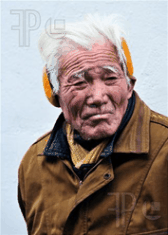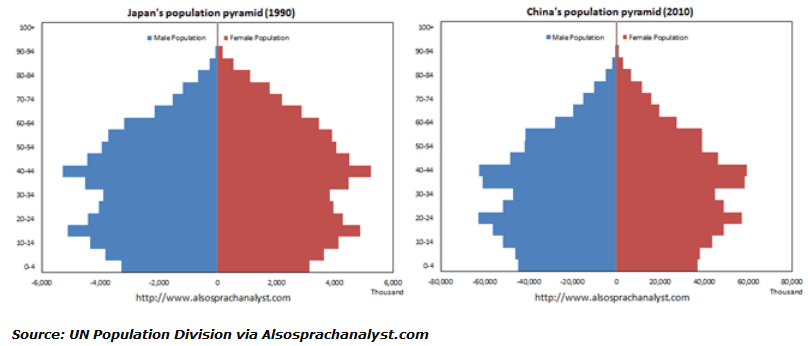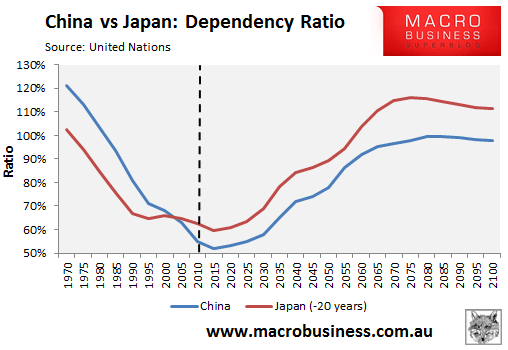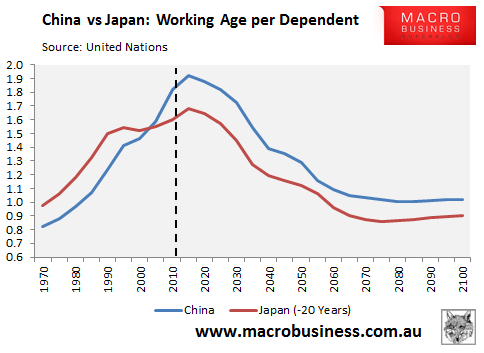
Recently I have written a series of articles (here and here) noting that China faces the same demographic headwinds as faced by Japan in the late-1980s just prior to the collapse of its joint property and stock market bubbles.
These articles were centred around the following graphics showing the similarities between Japan and China’s demographic make-ups.
First, the population pyramids of Japan in 1990 versus China in 2010 are remarkably similar:

Second, Japan’s dependency ratio in the 1990s – i.e. the ratio of the non-working population, both children (< 20 years old) and the elderly (> 65 years old), to the working age population – is very similar to China’s in 2010:

As are the the profiles of the number of working age people per dependent:

Now, the Bank of Japan has issued a strong warning that China risks a repeat of Japan’s boom-bust disaster of 20 years ago as exorbinant property prices combine with a demographic tipping point:
“China is now entering the ‘danger zone’,” said Kiyohiko Nishimura, the Bank of Japan’s deputy-governor and an expert on asset booms.
The surge in Chinese home prices and loan growth over the past five years has surpassed extremes seen in Japan before the Nikkei bubble popped in 1990. Construction reached 12pc of GDP in China last year; it peaked in Japan at 10pc.
Mr Nishimura said credit and housing booms can remain “benign” so long as the workforce is young and growing. They turn “malign” once the ratio of working age people to dependents rolls over as it did in Japan.
China’s ratio will peak at around 2.7 over the next couple of years as the aging crunch arrives. It will then go into a sharp descent, compounded by the delayed effects of the one-child policy.
“Not every bubble-bust episode leads to a financial crisis. However, if a demographic change, a property price bubble and a steep increase in loans coincide, then a financial crisis seems more likely”…
Japanese stocks have fallen by 75pc and Tokyo land prices by 80pc since the economy first began to slide into a deflationary trap two decades ago, although real per capita income has held up well. Any such fate for China – a much poorer country today than Japan in 1990 – has shattering implications.
A major difference between the two countries is that Japan was very wealthy when its demographic time bomb exploded, with per capita incomes exceeding that of most other Western nations. By contrast, China’s per capita income is currently well below those of the West, which will make the transition to an ageing society, and its ability to manage any economic fallout, all the more harder.
Twitter: Leith van Onselen. Leith is the Chief Economist of Macro Investor, Australia’s independent investment newsletter covering trades, stocks, property and yield. Click for a free 21 day trial.

